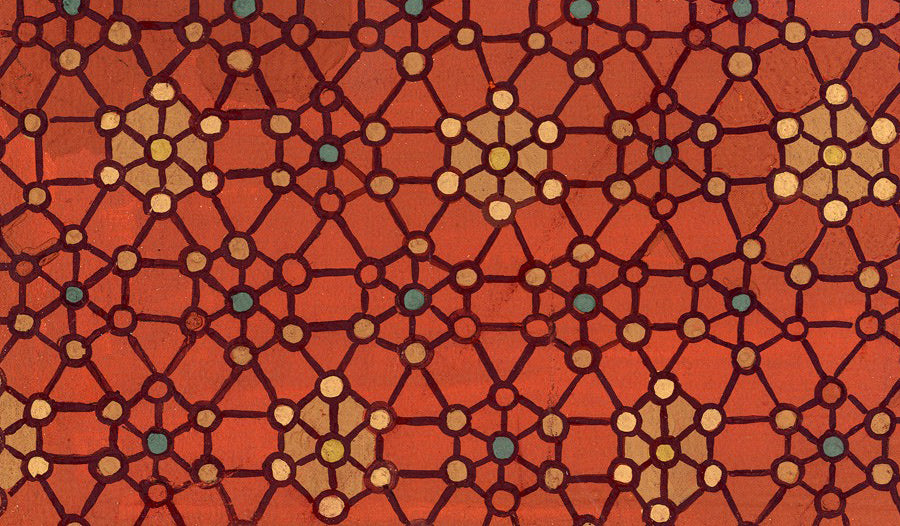
The Atom Dress
 Image: An example of a textile inspired by scientific advancements: Copper Aluminum Alloy. Festival Pattern Group (1950s).
Image: An example of a textile inspired by scientific advancements: Copper Aluminum Alloy. Festival Pattern Group (1950s).
The Textile Research Centre (TRC) in Leiden, the Netherlands is a research centre which aims to make its extensive textiles library, and over 20,000 artefacts, accessible to all. In the face of the ongoing COVID-19 pandemic, and despite it having to be rearranged due to ongoing government restrictions, the museum opened its new exhibition in March: From Buteh to Paisley, The story of a Global Icon. Alongside the exhibition they have published a series of blog posts taking an in-depth look at some of the pieces featured in the show.

Image: Detail of a dress with paisley motifs that enclose an 'atomic' design. USA, 1960's (TRC 2021.0355). Courtesy of Textile Resource Centre Leiden.
One such example is a 1960’s dress that is decorated with ‘atomic’ paisley. During the 1950’s and 1960’s, many people were excited about the concept of atomic power and space travel. Artists and designers started to produce designs representing the new age of atomic power that was both exciting (the space age) and frightening (the atomic bomb). In many of their works the connecting theme was exploding atomic particles but other ‘scientific’ designs included crystalline structures, x-ray crystallography and schematic drawings showing organic substances, including hemoglobin and insulin. The resulting ‘Atomic’ Age designs were produced for a wide range of functions and situations, including architectural forms, industrial designs, graphic arts (including books, wallpapers and posters), glassware, pottery, as well as for a variety of different types of textiles that were used for garments, curtains, furnishings, table clothes and tea towels.

The dress dates from the 1960’s and is made from a blue cloth, representing the sky, decorated with abstract, broken paisley motifs in white. Within each paisley motif there is an exploding atom. It could be mistaken for an abstract form but once spotted it is obvious. It may now seem a strange combination of motifs, paisley and atomic, traditional and very modern (for its time), yet it works!
One of the main themes raised by the exhibition is whether there is one ‘authentic’ paisley or buteh form as there are clearly so many interactions and instances of the pattern. Adaptable and now having been adopted by so many different cultures and designers, does it now belong to everyone and everywhere? One this is sure: paisley is a true global icon.
Keen to ensure that as many people can access the exhibition as possible, the TRC have published a digital version online.
The exhibition will run until 28 July. To find out more, visit the Textile Research Centre website, or contact info@trc-leiden.nl.
